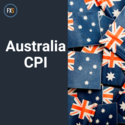The Zurich-based SNB implemented the cap in September 2011 after the franc came close to parity with the bloc’s currency. The franc has depreciated about 1.9 percent versus the euro since the European Central Bank announced an unprecedented bond-buying program in September 2012 to defend the euro. It was at 1.2294 per euro at 6:47 a.m. in Zurich.
The SNB’s foreign-currency reserves, about half of which are in euros, have held steady in the past year. They stood at 432 billion francs at the end of last month, compared with about 430 billion francs a year earlier. They were 282 billion francs in September 2011.
“The risks in the world economy are still to the downside and the Swiss franc is still high,” Jordan said yesterday, echoing the SNB’s most recent monetary-policy assessment on Sept. 19, when it maintained the cap and left the band for the benchmark interest rate unchanged at zero percent to 0.25 percent.
He also said the cap is the “right tool for ensuring price stability in Switzerland in the foreseeable future.”
“With short-term interest rates close to zero, the minimum exchange rate can prevent an undesirable tightening of monetary conditions in the event that upward pressure on the Swiss franc should intensify once again,” Jordan said. “The SNB stands ready to enforce the minimum exchange rate and take further measures as required.”
Recommended Content
Editors’ Picks
AUD/USD rises to two-day high ahead of Aussie CPI

The Aussie Dollar recorded back-to-back positive days against the US Dollar and climbed more than 0.59% on Tuesday, as the US April S&P PMIs were weaker than expected. That spurred speculations that the Federal Reserve could put rate cuts back on the table. The AUD/USD trades at 0.6488 as Wednesday’s Asian session begins.
EUR/USD holds above 1.0700 on weaker US Dollar, upbeat Eurozone PMI

EUR/USD holds above the 1.0700 psychological barrier during the early Asian session on Wednesday. The weaker-than-expected US PMI data for April drags the Greenback lower and creates a tailwind for the pair.
Gold price cautious despite weaker US Dollar and falling US yields

Gold retreats modestly after failing to sustain gains despite fall in US Treasury yields, weaker US Dollar. XAU/USD struggles to capitalize following release of weaker-than-expected S&P Global PMIs, fueling speculation about potential Fed rate cuts.
Ethereum ETF issuers not giving up fight, expert says as Grayscale files S3 prospectus

Ethereum exchange-traded funds theme gained steam after the landmark approval of multiple BTC ETFs in January. However, the campaign for approval of this investment alternative continues, with evidence of ongoing back and forth between prospective issuers and the US SEC.
Australia CPI Preview: Inflation set to remain above target as hopes of early interest-rate cuts fade

An Australian inflation update takes the spotlight this week ahead of critical United States macroeconomic data. The Australian Bureau of Statistics will release two different inflation gauges on Wednesday.